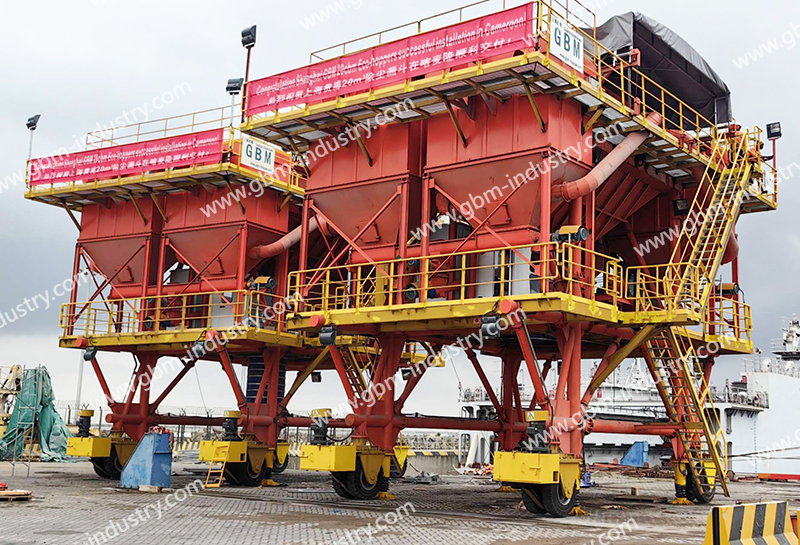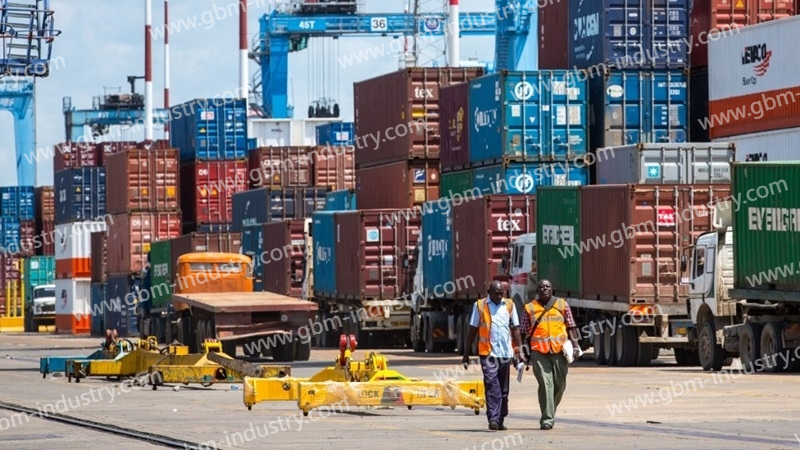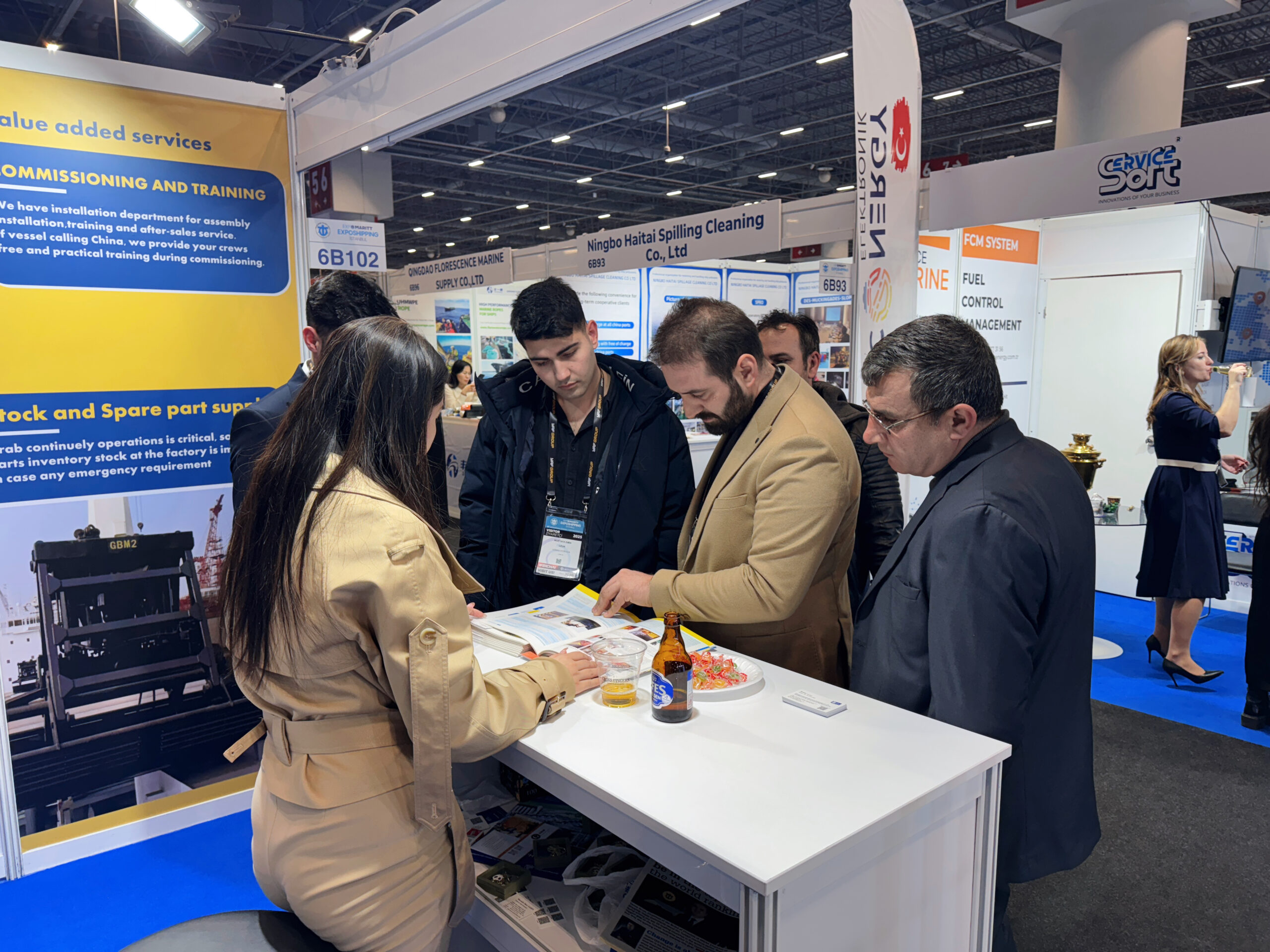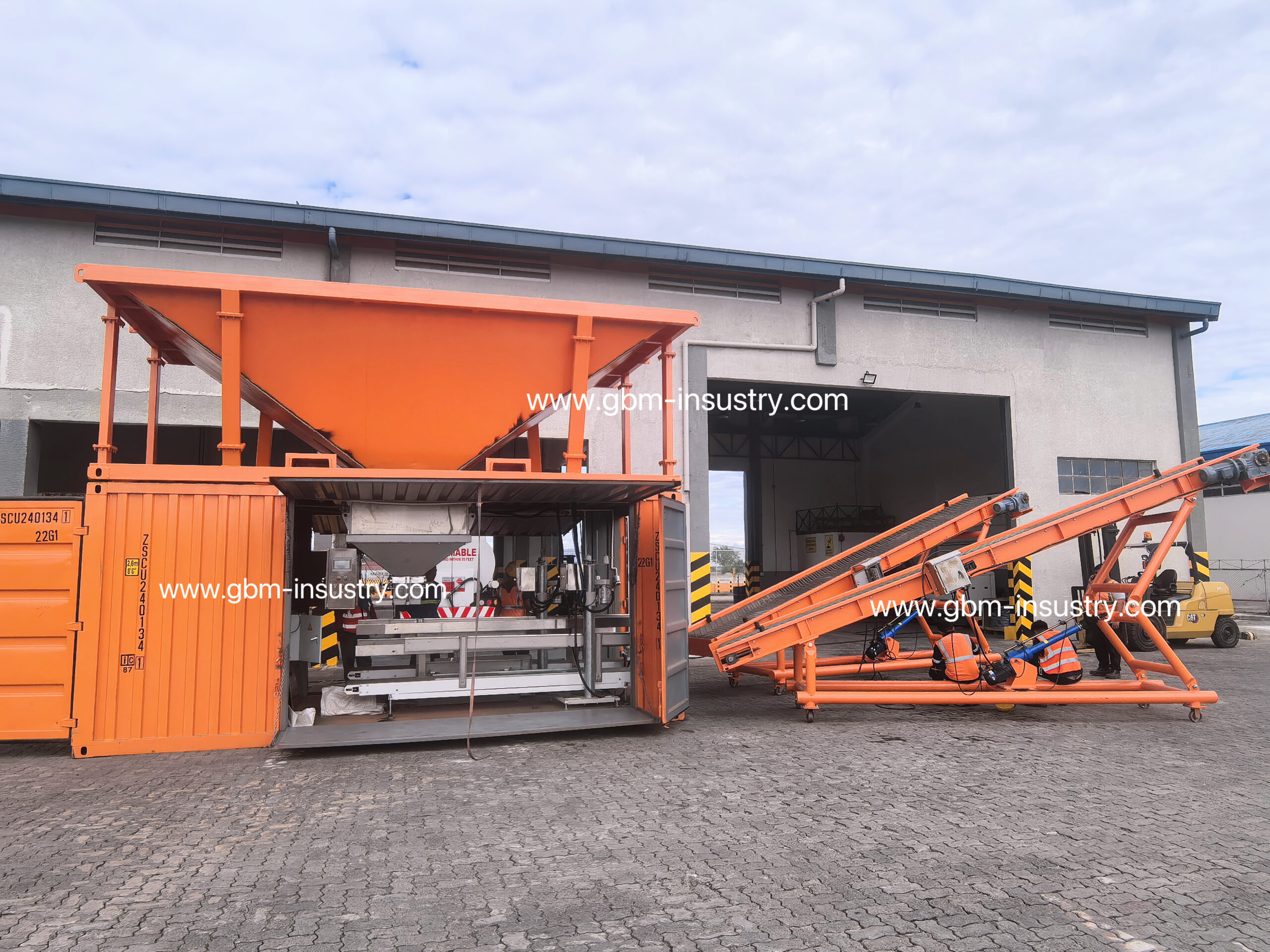Over the past three decades of reform and opening up, China’s coastal ports have achieved remarkable accomplishments in development and construction, with port throughput capacity now largely aligned with the needs of national economic development. In 2012, the total throughput capacity of China’s coastal ports (including ports along the Yangtze River downstream of Nanjing) reached approximately 66.4 billion tons.
The ratio of port throughput capacity to actual cargo throughput was close to 0.95:1, generally meeting current transportation demands. However, there remain imbalances in the adaptability of terminal capacities across different regions and cargo types. With the trend toward larger vessels and China’s industrialization, urbanization, and economic restructuring and upgrading, China’s port development also faces an urgent need for transformation and upgrading.

Global Port Development Trends
Continuous Enhancement of Port Functions and Roles
According to research by the United Nations Conference on Trade and Development (UNCTAD), major global gateway ports have already developed the functional characteristics of fourth-generation ports. Fourth-generation ports no longer exist solely as independent nodes in the transportation chain but also play a critical role as integral components of the supply chain. In the era of economic globalization and modern supply chain management, competition among ports has evolved into competition among the supply chains they participate in. Ports connect various transportation modes such as land, air, and water transport, and bridge domestic and international markets. They centralize logistics information from various stakeholders including suppliers, freight forwarders, land transport companies, shipping companies, shipping agents, and storage and transportation companies. While continuing to perform their transshipment functions, ports are increasingly taking an active role in organizing and planning cargo circulation, collaborating with other key enterprises in the supply chain and upstream/downstream transportation companies to develop integrated, seamless supply chain logistics networks. The role of ports has shifted from static, node-based to dynamic, network-based, with port services becoming more specialized, agile, and flexible.
The Impact of Larger Vessels on Port Development
Due to the economies of scale in shipping and factors such as the expansion of the Panama Canal, the trend toward larger vessels is becoming increasingly evident. Currently, orders for post-Panamax vessels account for over 92% of total orders. The trend toward larger vessels has driven the emergence of new global trunk and feeder network transportation services, with the proportion of water-to-water transshipments continuing to increase. To adapt to this trend, ports must not only improve the efficiency of cargo handling cranes and operational methods but also accelerate the construction of specialized deep-water terminals and optimize the transportation and distribution system to accommodate the growing volume of container handling operations.
Highly Concentrated Terminal Operators
To meet the needs of global supply chain management development, global terminal operators invest in and operate terminals in different regions, collaborate with other key enterprises in the supply chain, and coordinate with upstream and downstream transportation companies to provide network-based services, thereby possessing stronger international competitiveness than regional terminal operators. According to statistics from Drewry Shipping Consultancy’s “Annual Global Container Terminal Operator Review,” the combined operational scale of the world’s top four container terminal operators (Singapore International Port Group (PSA International), Hutchison Ports, APM Terminals, and DP World) accounts for 26% of global throughput. PSA adopts an international regional headquarters economic development model, having invested in and held controlling stakes in 28 port projects across 16 countries, with a total terminal berth length of 66 km and a container throughput capacity of 13 million TEUs; DP World has participated in 49 port projects across 31 countries. These specialized terminal operators can maximize the reliability of shipping schedules and reduce logistics costs through networked operations.
The Logistics Chain Involving Ports is Growing Longer
The “industrial agglomeration” formed by port-based industries has driven the development of services such as finance, insurance, modern logistics, and shipping. Ports have shifted from solely pursuing throughput to focusing on value-added growth, with their operations expanding from traditional cargo handling to upstream and downstream segments of the supply chain, including processing, warehousing, information services, distribution, and trade. The Port of Rotterdam not only houses industrial zones for refining, shipbuilding, petrochemicals, steel, food processing, and machinery manufacturing but also features bonded zones and distribution parks providing storage and transportation facilities, thereby transitioning from a freight hub to an international logistics center. In addition to traditional port loading and unloading operations, the Port of Singapore has expanded into core logistics and warehousing services, leasing distribution zones, container terminals, storage and transportation stations, and traditional warehouses to fully leverage the port’s comprehensive services to meet customer logistics needs.
Specialized Ports With Accurate Positioning
In recent years, the Port of Zeebrugge in Belgium has specialized in roll-on/roll-off (RoRo) terminal operations for automobiles, establishing a unique automotive assembly, warehousing, and distribution center, and has performed exceptionally well in Europe’s intense port competition. The Port of Ulsan in South Korea has emerged as a leading port in recent years, leveraging its deep-water advantages to vigorously develop refining and petrochemical industry clusters, aiming to establish itself as a Northeast Asian petroleum hub port.
Increasing Emphasis On Port Ecological Development
Pursuing harmonious development with the environment is a fundamental trend in port development. Major ports in Europe and the United States have established stringent standards for port environmental assessments and have been actively promoting green port development in recent years, encouraging ports to enhance production efficiency and reduce emissions of pollutants and noise through various effective measures. Ports such as Rotterdam, New York-New Jersey, Los Angeles, San Francisco, and Sydney have successively launched green port initiatives. “Green” has not only become an important indicator for measuring port development but also represents the future trend of port development.

Challenges and Issues Faced by Chinese Ports
Currently, regions such as the Bohai Rim, Yangtze River Delta, Southeast Coast, Pearl River Delta, and Southwest Coast in China are experiencing intensifying homogeneous competition among ports. Ports are competing through discriminatory pricing policies and massive investments in infrastructure to secure hinterland resources, transshipment cargo, and berthing vessels, leading to significant waste of social resources, unreasonable cargo transportation, and damage to shoreline resources and the environment, thereby affecting the economic performance of port enterprises.
Structural Overcapacity In port Infrastructure Coexists
Classifying terminal construction by major cargo transportation systems, China’s container terminals, northern coal terminals, and foreign trade crude oil unloading terminals all exhibit overcapacity, while southern coal unloading terminals and foreign trade iron ore unloading terminals are relatively underdeveloped. According to statistics from relevant departments, port construction in some regions of China is significantly excessive. In terms of density, the average density of ports with a capacity of 1,000 tons or more along China’s coast is one port every 50 kilometers, far exceeding the density of large ports in Europe and the United States, which is one port every 200 kilometers. Even in the relatively well-developed Yangtze River Delta region, the average overcapacity rate exceeds 20%, while in the Pearl River Delta region, port overcapacity is approximately 30%. According to calculations by the Ministry of Transport, the designed throughput capacity of ports currently fails to meet actual needs, yet the actual throughput capacity of ports far exceeds their planned capacity.
Improce Port Logistics Rationality
On one hand, China has not yet established a modern transportation network system where large, medium, and small ports complement each other, and trunk ports, feeder ports, and feeder ports develop in coordination. On the other hand, while emphasizing port planning and construction, there has been insufficient emphasis on the planning and construction of port logistics channels, resulting in frequent port congestion. The transportation of large container ports primarily relies on road transportation. Compared to the advantages of waterway and railway transportation, a large number of container trucks occupy urban roads, causing severe environmental pollution and having significant negative externalities.
Incomplete Port Convenience
Most Chinese ports have low levels of automation and informatization, with lagging development of port logistics public information platforms and e-commerce platforms. A unified document system and information service system for integrated multi-modal transportation has not yet been established, resulting in low port logistics efficiency, high logistics costs, and impaired port competitiveness.
Countermeasures for Upgrading of China’s Ports
Ports should actively enhance their service functions according to their own positioning, forming a service system with clear positioning, distinct levels, and coordinated support from a holistic perspective. Hub ports should further improve loading, unloading, and warehousing efficiency, improve the collection and distribution system, and consolidate the strategic layout of inland ports to enhance their core competitiveness. Feeder ports and feeder ports should actively explore their own advantages and strengthen coordination and interaction with hub ports.
Transitioning Port Development Models to Port Operations
Guide ports to shift from a development model focused on traditional loading and unloading capabilities to one emphasizing value-added services, transitioning from evaluating throughput volume to assessing increases in the value-added aspects of port operations. Port enterprises should vigorously develop circulation processing, distribution, freight forwarding, and specialized logistics services such as cold chain and automotive logistics, actively integrating into the global logistics supply chain; based on market demand, they should engage in diversified operations, taking port core businesses as the foundation, strengthening cooperation with related industries, and actively promoting joint operations between ports and industries such as shipping, commerce, finance, and real estate to extend the port logistics industry chain, thereby achieving the transformation to fourth-generation ports. At the same time, they should leverage the “industrial agglomeration” effect of port-adjacent areas to drive the development of services such as finance, insurance, modern logistics, and shipping.
Develop Intermodal Transport And Port Logistics system
From the perspectives of economic efficiency and environmental protection, the advantages of various transportation modes should be fully utilized to actively develop intermodal transport such as sea-rail, sea-river, water-water transshipment, and drop-and-hook transport. Emphasis should be placed on the production organization and operational management of intermodal transport to continuously improve service levels, with a focus on providing comprehensive, multi-tiered, and personalized services, upgrading traditional “port-to-port” services to “door-to-door” services.
Improve Level of Port Information Technology Development
Information technology development is an important means for ports to improve their service quality and level and strengthen their overall competitive strength. On one hand, port enterprises should enhance the automation and intelligence levels of key equipment at the port frontline, as well as the technical capabilities for port transshipment operations involving waterways, highways, and railways. They should promote the application of automated loading and unloading equipment, intelligent process control, and integrated management and control systems to elevate the intelligence level of port production organization and operational management; On the other hand, they should promote electronic data networking and exchange among ports, shipowners, shipping agents, freight forwarders, cargo owners, and port regulatory authorities to enhance logistics information integration service capabilities and standards, particularly achieving interconnectivity and interoperability of regulatory information among port and shipping, maritime, customs, quarantine, and immigration authorities. This includes standardizing electronic bills of lading, mutual recognition of regulatory standards, mutual assistance in enforcement, and collaborative management to optimize the port clearance environment.
Promote Green Port Development
Properly balance the relationship between environmental protection and social development, as well as the coordinated development of ports and cities. Strengthen source control, develop comprehensive planning, and rationally allocate resources such as port waterfronts, land, and water areas; encourage the use of clean energy sources like wind power, solar energy, and liquefied natural gas, and promote the application of new energy-saving technologies and products to improve energy efficiency; Enhance social responsibility, proactively pursue corporate environmental management certification, and reduce emissions of pollutants such as port exhaust gases, dust, noise, and wastewater.
GBM Actively In Port Transformation
In response to the new trends in global port development and the urgent need for China’s ports to upgrade and transform, GBM, as a professional provider of integrated terminal handling solutions, actively aligns with national strategies and industry transformations, deeply engaging in the construction and development of modern ports.
GBM deeply understands the challenges currently faced by ports: the trend toward larger vessels imposes higher demands on terminal infrastructure and operational efficiency; port functions must expand from single-purpose loading and unloading to comprehensive logistics services; and green and intelligent development has become an inevitable trend. To this end, GBM leverages its robust R&D capabilities and extensive engineering experience to provide a range of advanced integrated cargo handling equipment and system solutions:
Eco Hopper:

GBM’s high-efficiency equipment features rapid loading/unloading, precise positioning, and heavy-load capabilities, significantly reducing the time large container ships spend in port. Our advanced intelligent solutions optimize operational workflows, maximize terminal throughput capacity, effectively address the pressure of surging container volumes, and help ports enhance their core competitiveness.
GBM not only provides basic loading and unloading equipment but also focuses on extending the port logistics chain. Integrated systems help port enterprises expand into high-value-added businesses such as circulation processing and warehousing and distribution, enabling a transformation from a “freight hub” to a “logistics and supply chain center”;
GBM actively practices the concept of green development. Our equipment widely applies energy-saving technologies such as variable frequency control, significantly reducing energy consumption. It effectively reduces exhaust and noise pollution during port operations. In terms of informatization, GBM’s equipment integrates intelligent sensing and IoT technologies, enabling seamless integration with port information platforms to build a multimodal transport system.

Summary
The development of global ports is characterized by several prominent trends: deepening functional integration into supply chains, infrastructure upgrades driven by larger vessels, high concentration of terminal operators, vertical extension of logistics chains, specialized port differentiation, and increasing importance of green and ecological development.
While Chinese ports have achieved significant accomplishments, they also face severe challenges such as intense homogenized competition, structural overcapacity and regional imbalance in infrastructure, low efficiency in the transportation and distribution system, insufficient information technology levels, and growing environmental pressures.
To address these challenges and align with global trends, the transformation and upgrading of China’s ports are imperative. Equipment and solutions providers like GBM are playing a crucial role in driving efficiency improvements, functional expansion, and sustainable development in China’s ports by offering efficient, intelligent, and green integrated cargo handling solutions and logistics technology support.





